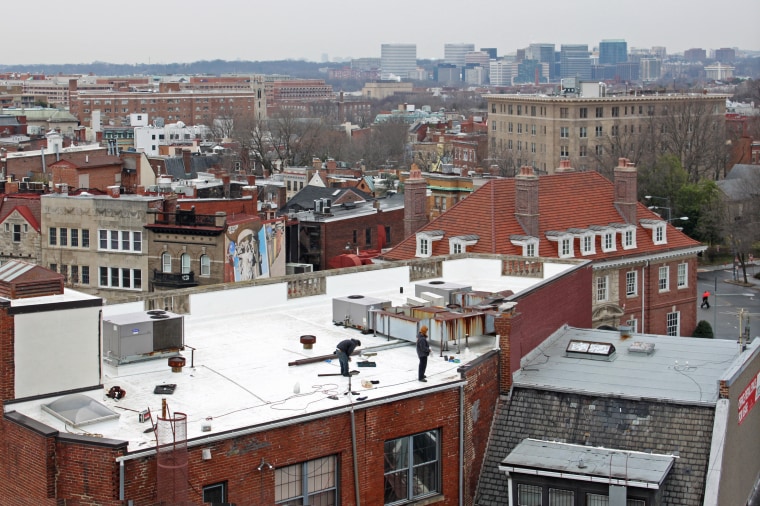If every degree Fahrenheit counts in stabilizing the climate, then painting the roofs of city buildings white could offer a significant payoff, according to the first computer modeling study of an idea that's taken hold in cities around the world.
"Our research demonstrates that white roofs, at least in theory, can be an effective method for reducing urban heat,” Keith Oleson, the lead author of the study and a scientist at the National Center for Atmospheric Research, said in a statement.
The idea is being tested in cities like Seattle and Washington, D.C., as well as parts of Europe. And it's been touted by policymakers like U.S. Energy Secretary Steven Chu.
"As we put in more greenhouse gases, we're putting in more insulation for infrared light. So if you make white roofs and the sunlight comes in, it goes right through" that insulation, Chu told a conference last year.
Urban heat islands
It's known that cities are warmer by a few degrees than rural areas due to what's called the "urban heat island effect" — artificial surfaces like dark roads and roofs that absorb heat more than lighter surfaces.
If every roof in a given city were entirely painted white, the urban heat island effect could be reduced by 33 percent, the researchers found.
"This would cool the world's cities by an average of about 0.4 degrees Celsius (0.7 degrees Fahrenheit), with the cooling influence being particularly pronounced during the day, especially in summer," the National Center for Atmospheric Research said in a statement.
The model did not have enough detail to capture individual cities, but it could estimate changes in larger metropolitan regions. "The New York area, for example, would cool in summer afternoons by almost 1.1 degrees Celsius (2 degrees Fahrenheit)," NCAR said.
Not always a better way
The team also emphasized that the impact is not uniform across cities and that white rooftops in some areas could even have a downside.
That's because white roofs would cool temperatures within buildings. A good thing in summer but in winter that could mean an increased use of heaters — and burning of fossil fuels tied to warming.
"Depending on whether air conditioning or heating is affected more, this could either magnify or partially offset the impact of the roofs," NCAR said.
Added Oleson: "It’s not as simple as just painting roofs white and cooling off a city."
Funded by the National Science Foundation, NCAR’s sponsor, the study has been accepted for publication in Geophysical Research Letters, a journal of the American Geophysical Union.
Chu, for his part, said society should also think beyond buildings. "If all vehicles were light-colored, there could be considerable savings because then you can downsize the air conditioning," he said at the conference. "And downsizing the air conditioner means more efficient air conditioning and a considerable reduction in energy."
